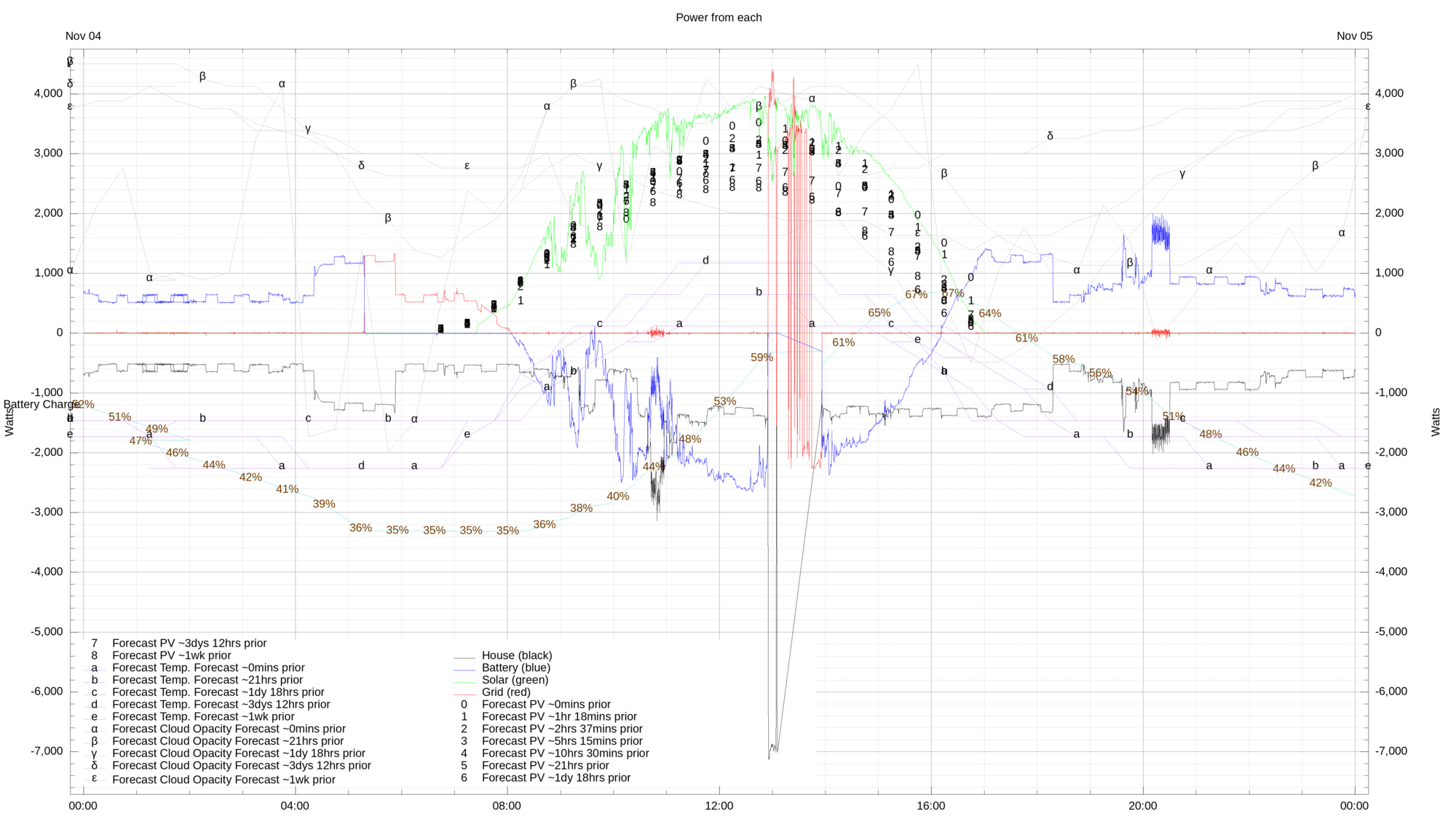We've had a Powerwall 2 for just over two years, and for the first eighteen months (until March 2023) we had five hours per night of cheap rate electricity on the Octopus "Go Faster" tariff. Throughout that period - when using Time Based Control - our Powerwall would charge at a rate of 3.7 kW, which I've read several times is the optimum charging rate.
Since March 2023 Octopus have withdrawn "Go Faster" and the only similar tariff is "Go", which only has four hours a night of cheap rate electricity. I reset our app time settings, and since then our Powerwall charges at 5 kW on TBC.
I am concerned that this is putting unnecessary wear and tear on the battery. Even with only four hours a night avialable to charge economically, 3.7 kW would be a high enough rate (3.7 kW x 4 hours = 14.8 kWh, more than the capacity of the battery, so even if completely flat the battery could charge back up to 100% in four hours).
I contacted Tesla and was assured that 5 kW would not be harming the battery, although there seemed to be some hint of doubt in what they said about exactly why the maximum charge rate was being used instead of the optimum rate, with muttered talk of my possibly having having changed my "grid code" from P98 to P99 (I haven't of course). I think they said that 5 kW was indeed unusual and only for installations with a P99 code, which I'm fairly certain doesn't apply to me.
I'm left feeling that my battery is being abused night after night unnecessarily. Does anyone have any advice? Has anyone found the same situation - after all there must be others who were like me bumped off Octopus Go Faster last March...?
Finally, I continue to seethe that there is no progress in giving us a "charge to x % tonight" option in the app. The algorithms continue to make duff decisions about how much to charge the battery and only I can really make an accurate assessment of tomorrow's weather and my power needs on a day to day basis. That gripe is of course fully discussed here:

 teslamotorsclub.com
teslamotorsclub.com
Since March 2023 Octopus have withdrawn "Go Faster" and the only similar tariff is "Go", which only has four hours a night of cheap rate electricity. I reset our app time settings, and since then our Powerwall charges at 5 kW on TBC.
I am concerned that this is putting unnecessary wear and tear on the battery. Even with only four hours a night avialable to charge economically, 3.7 kW would be a high enough rate (3.7 kW x 4 hours = 14.8 kWh, more than the capacity of the battery, so even if completely flat the battery could charge back up to 100% in four hours).
I contacted Tesla and was assured that 5 kW would not be harming the battery, although there seemed to be some hint of doubt in what they said about exactly why the maximum charge rate was being used instead of the optimum rate, with muttered talk of my possibly having having changed my "grid code" from P98 to P99 (I haven't of course). I think they said that 5 kW was indeed unusual and only for installations with a P99 code, which I'm fairly certain doesn't apply to me.
I'm left feeling that my battery is being abused night after night unnecessarily. Does anyone have any advice? Has anyone found the same situation - after all there must be others who were like me bumped off Octopus Go Faster last March...?
Finally, I continue to seethe that there is no progress in giving us a "charge to x % tonight" option in the app. The algorithms continue to make duff decisions about how much to charge the battery and only I can really make an accurate assessment of tomorrow's weather and my power needs on a day to day basis. That gripe is of course fully discussed here:
Tesla: we need more control over our PowerWalls
Tesla, Today around 1PM, you can see I turned off my PowerWalls. Do you know why? Because I wanted to use more of my stored electricity during the evening when solar is not shining and use the solar energy available from the grid during the day during non-peak hours rather than fossil fuels...


